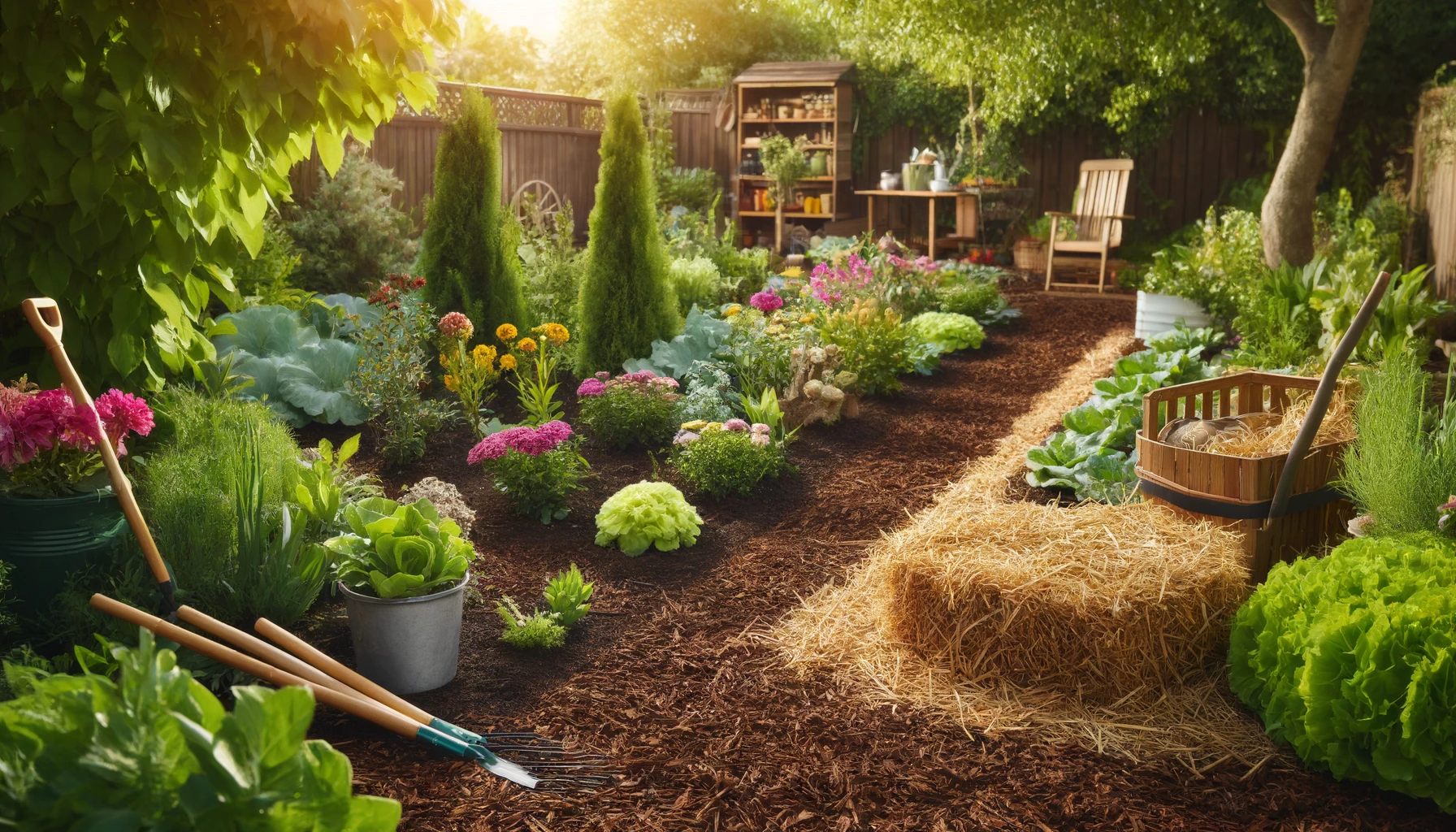Mulching is a simple yet effective gardening technique that benefits plants and soil in numerous ways. By adding a protective layer of organic or inorganic material over the soil, you can improve moisture retention, suppress weeds, regulate temperature, and enhance soil fertility. In this guide, we’ll explore the benefits of mulch and how to use it effectively for healthier plants and gardens.
What Is Mulch?
Mulch is any material spread over the soil surface to protect or improve it. It can be made from organic materials like bark or compost, or inorganic materials like gravel or plastic. Each type of mulch has specific advantages depending on your gardening needs.
Benefits of Mulching
- Moisture Retention: Mulch reduces water evaporation, helping soil stay moist longer and requiring less frequent watering.
- Weed Suppression: A thick layer of mulch blocks sunlight, preventing weeds from germinating and growing.
- Soil Temperature Regulation: Mulch keeps soil cooler in summer and warmer in winter, creating a stable environment for plants.
- Improved Soil Fertility: Organic mulches decompose over time, enriching the soil with nutrients.
- Erosion Control: Mulch prevents soil from washing away during heavy rains.
- Enhanced Aesthetics: Mulch adds a clean, finished look to garden beds and pathways.
Types of Mulch
Organic Mulch
Organic mulches are made from natural materials that decompose over time, improving soil quality.
- Bark and Wood Chips: Long-lasting and ideal for flower beds or around trees and shrubs.
- Compost: Rich in nutrients, perfect for vegetable gardens and flower beds.
- Straw and Hay: Great for vegetable gardens, providing excellent weed control and soil insulation.
- Grass Clippings: Free and readily available, but use sparingly to avoid matting.
- Leaf Mulch: Adds nutrients as it decomposes and works well in flower beds.
Inorganic Mulch
Inorganic mulches are non-decomposing materials that offer long-term benefits.
- Gravel and Stone: Durable and ideal for pathways or xeriscaping.
- Plastic Sheeting: Effective for weed control but doesn’t improve soil fertility.
- Landscape Fabric: Allows water to penetrate while blocking weeds.
How to Apply Mulch
Step 1: Prepare the Area
- Remove existing weeds and debris from the area where you’ll apply mulch.
- Loosen the soil with a rake to improve aeration.
Step 2: Choose the Right Mulch
- Select mulch based on your garden’s needs, such as moisture retention or aesthetics.
- For vegetable gardens, use organic mulches like straw or compost.
- For decorative purposes, consider bark or gravel.
Step 3: Apply the Mulch
- Spread the mulch evenly around plants, maintaining a depth of 2-4 inches.
- Keep mulch a few inches away from plant stems or tree trunks to prevent rot and pests.
Step 4: Maintain the Mulch
- Replenish organic mulch as it decomposes to maintain effectiveness.
- Check for compacted areas and fluff the mulch to improve airflow and water penetration.
Tips for Effective Mulching
- Match Mulch to Plants: Use light, fast-decomposing mulch for annuals and perennials, and heavier mulch like wood chips for shrubs and trees.
- Monitor Moisture Levels: While mulch retains moisture, overwatering can still occur. Check soil moisture before watering.
- Avoid Over-Mulching: A thick layer of mulch can suffocate roots and impede water penetration. Stick to the recommended depth of 2-4 inches.
- Combine Mulching with Drip Irrigation: Mulch works well with drip irrigation systems, ensuring water reaches plant roots efficiently.
Common Mulching Mistakes to Avoid
- Piling Mulch Against Stems or Trunks: This creates a moist environment that invites rot and pests.
- Using Inappropriate Mulch: Avoid materials like fresh grass clippings or sawdust that may introduce mold or deplete soil nutrients.
- Applying Mulch Too Late: Mulch early in the growing season to prevent weeds and regulate soil temperature.
Conclusion
Mulching is a simple yet powerful way to improve your garden’s health and aesthetics. By choosing the right type of mulch and applying it correctly, you can enjoy thriving plants, enriched soil, and reduced maintenance. Whether you’re growing vegetables, flowers, or trees, mulch is a valuable tool for any gardener.
